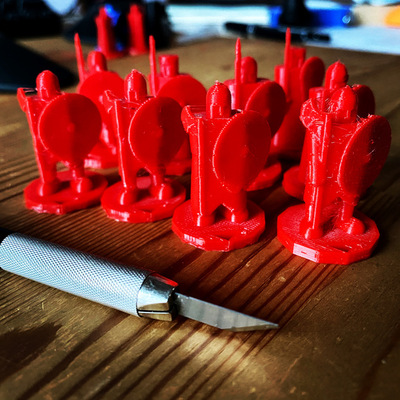
|
Marble Madness |
| 2021-04-12 |
Marble Madness
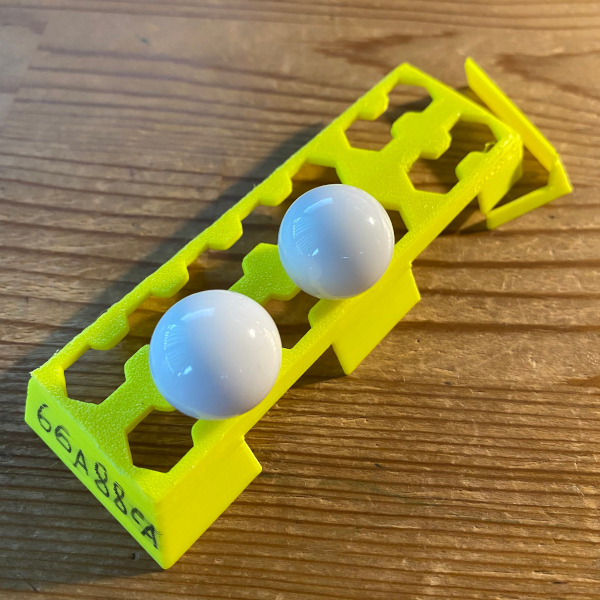
One month ago, I was sawing one dollar plastic abacuses in three and getting ready to track damage for the creatures I opposed to my players.
I played two sessions with those truncated abacuses behind my referee screen. Itt did the job, but there were three problems.
Primo, my eyesight is not as good as it was. Wearing a mask and glasses may also temporarily blind me these days. The abacuses are a bit small and I am not always behind my screen during a fight.
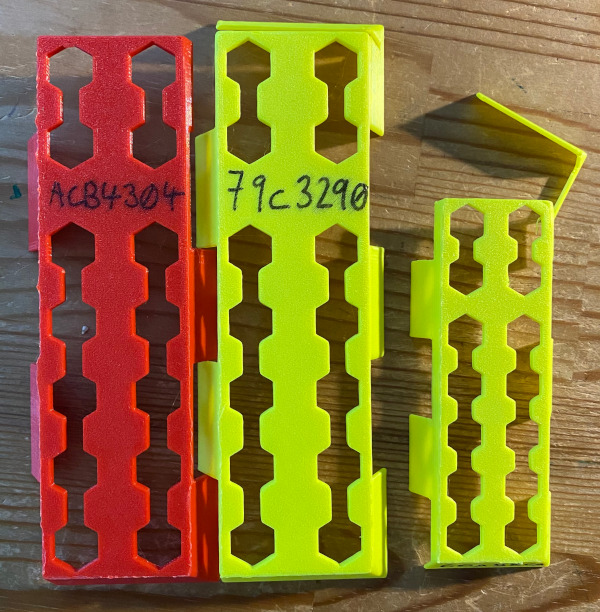
Secundo, I wanted to "connect" the abacus with the index card of the creature whose damage is being tracked.
Tertio, I had to put a mini poker mat under the abacuses to prevent them from sliding. Not very happy about that. I really want to be able to operate the abacus with a single hand.
I wanted something a big bigger. There is an Abalone box stored right next to my 3D printer. Something was bound to happen.
I ordered marbles and started designing abacuses as marble tracks. For my first design, I wanted something quickly printable, stackable, and with an index card holder. My very first print was too small since I mixed hole diameter with ball diameter but it felt promising, it's in the very first picture.
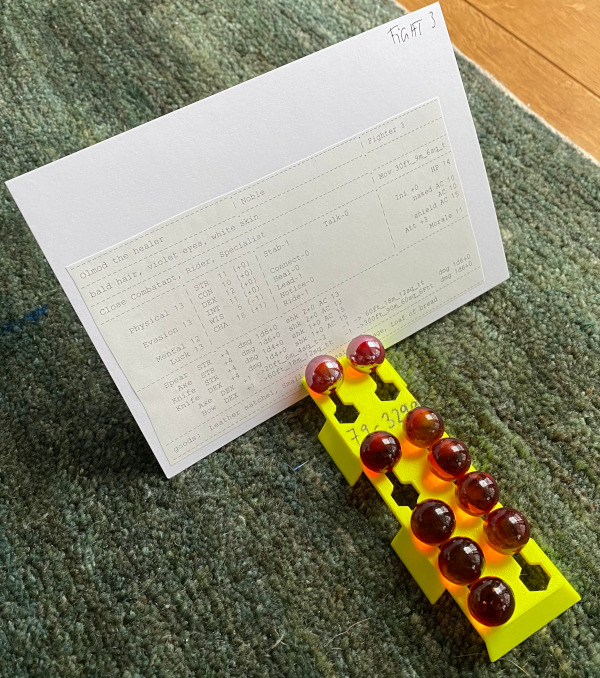
The modus operandi is still the one behind the japanese abacus, 4 "unit" balls or lenses and 1 "five" ball or lens.
I included "teeth" in the design, so that I could lock together the tracks. Unfortunately it was brittle, especially at the head of the abacus where I had inserted a slit to place index cards, that weakened the support and it broke easily, as seen in the first picture.
The weight of the marbles was supposed to prevent the abacus from sliding. But even with two interlocked abacuses the friction was not sufficient and the system was fleeing my manipulations.
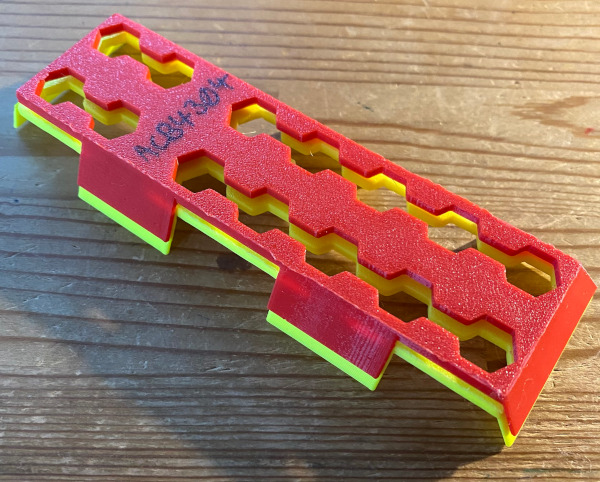
I was happy with the index cards held at angle, it reduced the space consumption behind my referee screen. I kept that angle for the next designs. My create stat block printing tool needs some refinements, I'd like to print HD / HP / AC / ATT and such main stats to be printed big and bold, so they dominate their marbles and inform me at longer ranges.
I simplified and went flat, I kept the tooth idea. More plastic, more friction, two slits per abacuses. Abacus or wrench? It feels good in the hand.
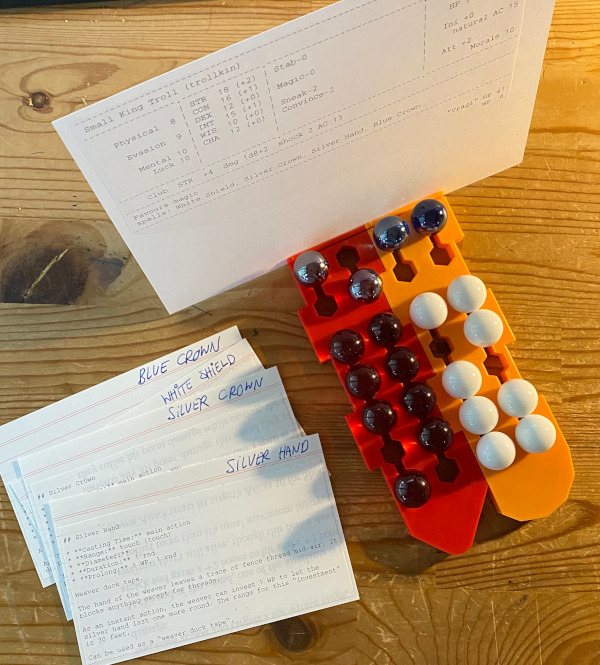
It is a success, the final design even at one track is stable enough to be manipulated with one hand. And it's a pleasure to manipulate.
I made it a parametric design so that I could choose how many tracks per board, but I ended up printing one track and two tracks boards.
Single track abacuses go from 0 to 9 and can thus be used for single HD creatures or low magical point creatures (one abacus for hit points, one for magical points).
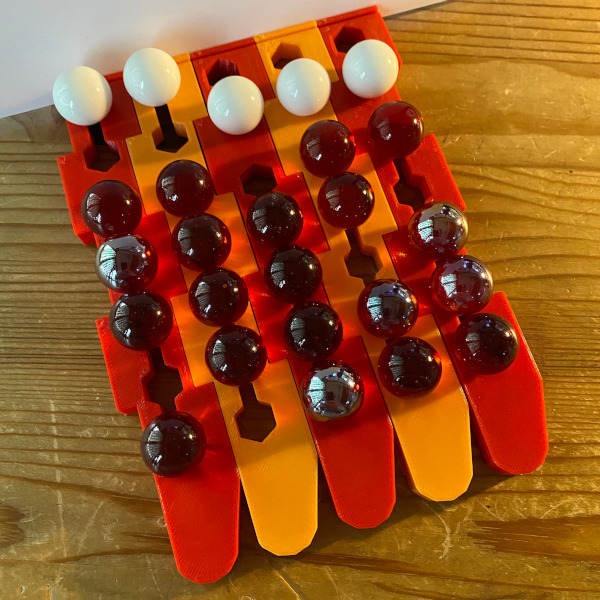
The troll picture shows one abacus for hit points joined with one abacus for magical points. The creature's index card is placed in the slit shared by the two abacuses.
The goblin picture shows five one-track abacuses, locked together, sharing one index card and thus tracking the hit points for five goblins. From left to right, 3, 4, 5, 7, and 6 hit points respectively.
I printed red and orange boards for the opposition and some blue boards for tracking "friendlies". I'll probably use red, transparent, marbles for tracking hit points and white marbles for tracking magical points.
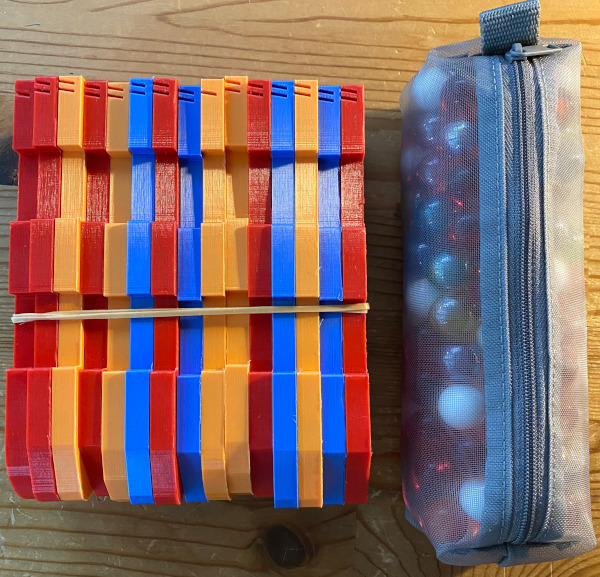
It might prove slower than regular abacuses but at least I can read hit points from further away. I will probably track hit points and not damage points. It's a bit more difficult to subtract than to add, but I'll get better at it soon enough.
The system looks satisfyingly nice, a hybrid back between the japanese abacus and the counting board. The two track board counts from 0 to 99, and it's easy to add one or two more tracks of the same color to extend the coverage.
It can be used to count any resource, it's easily labellable with its index card slit. It should prove useful.
I have further ideas to "engage" the remaining marbles. Stay tuned.
For the printers among you, here are the .scad source files.
